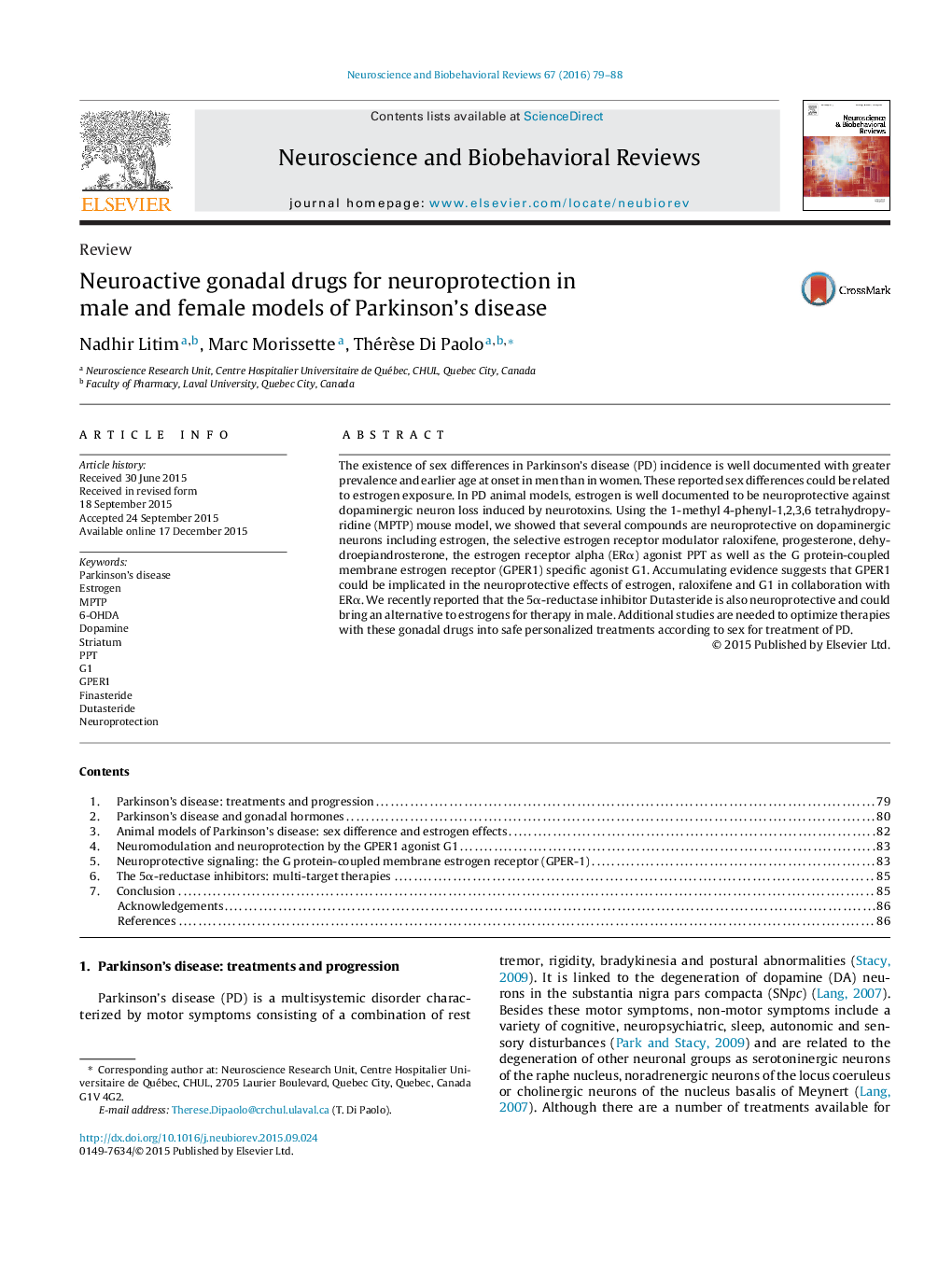| Article ID | Journal | Published Year | Pages | File Type |
|---|---|---|---|---|
| 937403 | Neuroscience & Biobehavioral Reviews | 2016 | 10 Pages |
•Exposure to estrogens is correlated with a low susceptibility to develop PD.•Estrogen, raloxifene, progesterone, DHEA, PPT and GPER1 agonist G1 are neuroprotective.•GPER1 is implicated in the neuroprotective effects of estrogen and G1.•5α-reductase inhibitor Dutasteride is neuroprotective as potential multi-target therapy.•These neuroprotective agents could be used in personalized treatments according to sex.
The existence of sex differences in Parkinson's disease (PD) incidence is well documented with greater prevalence and earlier age at onset in men than in women. These reported sex differences could be related to estrogen exposure. In PD animal models, estrogen is well documented to be neuroprotective against dopaminergic neuron loss induced by neurotoxins. Using the 1-methyl 4-phenyl-1,2,3,6 tetrahydropyridine (MPTP) mouse model, we showed that several compounds are neuroprotective on dopaminergic neurons including estrogen, the selective estrogen receptor modulator raloxifene, progesterone, dehydroepiandrosterone, the estrogen receptor alpha (ERα) agonist PPT as well as the G protein-coupled membrane estrogen receptor (GPER1) specific agonist G1. Accumulating evidence suggests that GPER1 could be implicated in the neuroprotective effects of estrogen, raloxifene and G1 in collaboration with ERα. We recently reported that the 5α-reductase inhibitor Dutasteride is also neuroprotective and could bring an alternative to estrogens for therapy in male. Additional studies are needed to optimize therapies with these gonadal drugs into safe personalized treatments according to sex for treatment of PD.
